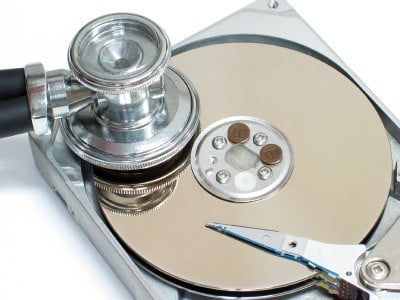Data recovery technicians are no stranger to hard drives with bad sectors. In fact it’s one of the more common forms of hard drive damage that we see from consumer storage devices. So what exactly are bad sectors or media errors and how do they effect a hard drive?
What is a hard drive sector?
Let’s start with the basics. Sectors hold tiny chunks of information. The sector itself is just a small section of magnetic media surface. This surface is referred to as the platter(s) of the hard drive.
Sectors represent how data is broken up and where it is stored on to hard drives (and other storage devices). Most sectors are 512 bytes on older drives and 4096 bytes on modern drives. They are a component that is part of what is referred to as ‘disk geometry’ or the physical location of data stored on the hard drive’s platters.
Your actual data is stored in these very same sectors as fragments. These fragments are what make up your files, such as documents, photos, music, etc. When the fragments of data that are stored in each sector are assembled properly your data is accessible to read, edit, save, etc. But when these fragments of data cannot be accessed properly, it may be due to bad sectors. And those bad sectors may actually worsen as the drive is accessed.
How do hard drive sectors go bad?
Most of the time hard drive storage sectors go bad because of wear and tear. Hard drives are spinning around from 5,400 RPM all the way to 15,000 RPM depending on the model. This force, combined with the heat of a motor and the action reading and writing data all cause the hard drive to begin to stress itself on a molecular level.
The surface that data is recorded on to is a microscopic layer of magnetic material that is electroplated on to the hard drive’s platter. As a result it is quite fragile and can actually begin to degrade or even flake off in to tiny bits of metal over time. Sectors may also degrade due to direct physical damage, manufacturer defects or other problems.
Bad sectors are defined as a sector that take a long time to access, is no longer readable/writeable or otherwise compromised. Because bad sectors are a sign of a hard drive failing, it is recommended that hard drives with this condition are retired as they will functionally deteriorate until they are no longer operational.
How can I avoid bad sectors?
You can’t reliably avoid bad sectors, but you can try to ensure that you keep your data on multiple storage devices, so that when (and not if) one dies, you have a copy of your data located somewhere else that is still reliable. To ensure your drive has a long, healthy life you can be mindful of extreme temperature changes, high humidity, physical shock and not moving the hard drive while it is powered on.
I didn’t backup, is my hard drive’s data lost?
Probably not so don’t lose hope yet! Envescent is a small, family-owned and operated company that offers expert data recovery services at competitive prices to the Washington, DC area and beyond. We will exhaust every option to re-unite you with your data as cost effectively as possible. Our rates are competitive and our success rate is currently 90%. That means there’s a very good chance that if you can’t find your data anywhere else, we can recover it from a damaged hard drive with bad sectors (or other maladies).

